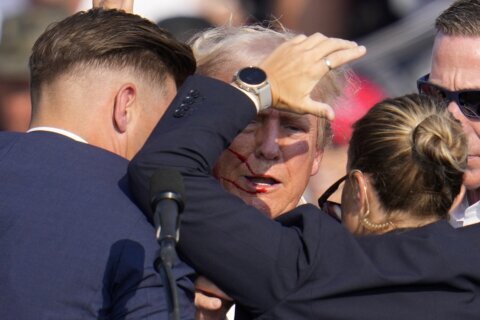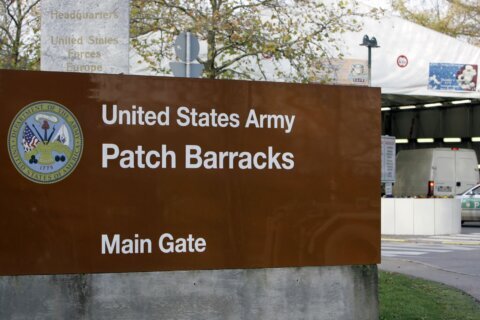WASHINGTON — The Islamic State of Iraq and al Sham (ISIS) terror group is under heavy global pressure from militaries and law enforcement organizations, but military and counterterrorism officials forecast no letup in the current wave of international terrorism.
“We think that transnational terrorist attacks, in the near term, will probably remain steady. The group has been able to build a robust and redundant apparatus for conducting transnational terrorist attacks,” said a U.S. defense official.
ISIS will likely continue to employ a less-centralized approach to attacks, the official said — one driven by slick, incendiary online messages.
“They have a lot of people in place already that are sympathizers around the world. … We think they will be able to continue to be able to produce at least a constant level of propaganda, which underpins a lot of the ideology in Europe and elsewhere,” the official said.
Currently in Europe, the terror threat, which is high, is driven by ISIS, Al Qaida and other mostly Salafist groups.
Kristian Bartholin, deputy head of counterterrorism at the Council of Europe, said, “Due to the current high alert levels, it is difficult for terrorists to operate in traditional cell structures; hence, we see more ‘lone wolf’ attacks.”
As authorities work to stay ahead of the threat, a key concern is figuring out whether lone wolf plotters are legitimately working on their own, or whether ISIS has an indirect hand in their actions.
“I think what we’re going to see, going forward, is (fewer) deployed operatives — (fewer) people going from Syria back to France for example, which we have seen in the past, and more ‘enabled and inspired’” plots, the defense official said.
A senior U.S. counterterrorism (CT) official said in a statement sent to WTOP, that they look at threats on a spectrum: “Individual plots can be viewed from inspired to enabled to directed, based on the strength of the connection between the would-be attacker and a foreign terrorist organization (FTO).”
The CT official said the amount of involvement by an FTO is measured “by the extent of its support to and contact with the operatives, whether that takes place physically, virtually or both.”
Directed attacks, for many years the operational model used by FTOs, involve support for all or nearly all facets of an attack. Terror organizations “generally exercise oversight of directed plots through their planners, facilitators, and operatives, but may delegate aspects of a plot’s execution to the attacker to increase tactical flexibility,” the CT official said.
In an enabled attack, the CT official said, the terror group may provide the person or cell plotting the attack “support or guidance on tactics, targets, or timing. But the attacker retains overall control of the plot.”
Inspired attacks happen when a person or cell conducts an attack without operational contact or direct support from a terrorist group. “The attacker may declare allegiance to a terrorist group but independently manages preparations, such as acquiring money and material, and determines what and how to strike. Terrorist propaganda often influences these decisions,” said the CT official.
Inspired plots often grow out of a sympathizer ingesting terrorist propaganda and making a personal decision to act.
“The total amount of propaganda ISIS churns out has decreased,” the U.S. defense official said. “But the percentage of propaganda that talks about attacks and external attacks has actually increased.”
Instead of urging recruits to come and partake in the “idyllic life within the Islamic caliphate,” the defense official said, “there’s more that talks about the attacks (groups have) done in Europe, and ‘Here’s what we’ve done in this place and the other place.’”
ISIS’s recent messaging, according to several U.S. intelligence and law enforcement sources, suggests that more external, lone wolf attacks in the U.S. and Western Europe are a priority.
“Most of the ‘lone wolf’ attacks in Europe are carried out by persons already there for a considerable time, but some have also been carried out by operatives smuggled in through the flows of migrants of last year,” Bartholin said.
The increasing military and law enforcement pressure on ISIS in its controlled territory since 2014 has gradually forced the organization to gradually shift its attack strategy.
“After the two attacks in Paris in 2015, the attacks later in Copenhagen, Germany, Nice (in the south of France), I would say the fact that we are seeing more and more lone wolf attacks … is a direct consequence of the fact that it has become incredibly difficult to operate in a cell structure,” said Bartholin.
Inspiring attacks is critical to the survival of ISIS because the U.S.-led military coalition is taking territory and money away from the group while killing leaders and fighters. “ISIS has lost more than a quarter of the territory it controlled in Iraq and Syria in the last year,” according to a report by IHS Conflict Monitor.
But the U.S. defense official doesn’t expect them to give up: “Past is prologue. I believe the organization believes it can wait us out. And it will, like you saw in 2010, 2011, go underground to a large extent and wait for its next opportunity — at least in Iraq and Syria.”









